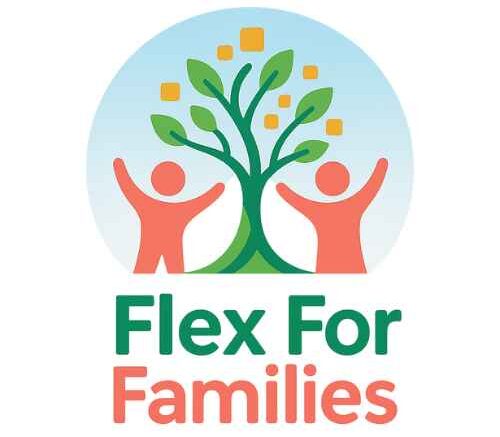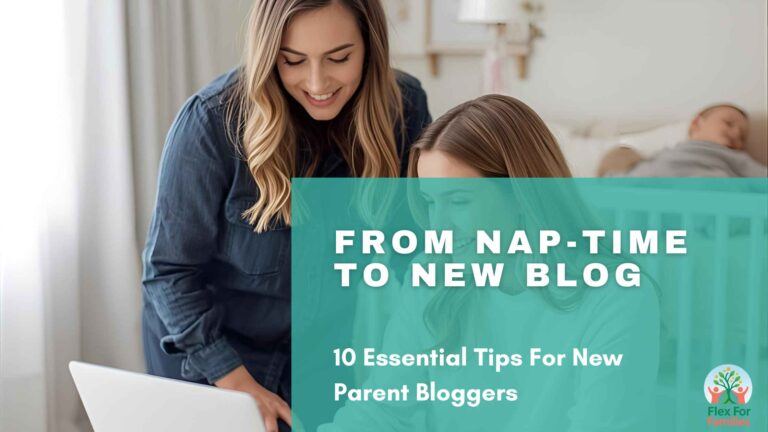If you’ve ever found yourself tempted by a “make money while you sleep” ad during nap time, you’re definitely not alone. When you’re juggling family life and dreaming of flexible income, it’s easy to see why those promises sound appealing.
But here’s the truth: if something sounds too good to be true, it usually is.
The online world is full of blogging courses claiming you can quit your job, automate your income, and hit five figures in your first month — all without effort. Unfortunately, many of these are more marketing magic than actual mentorship.
Many “get rich quick” blogging courses share patterns found in typical online scams — vague promises, no refunds, and hidden upsells.
This post isn’t about shaming anyone who’s been drawn in. It’s about helping you spot the red flags before they cost you time, money, and confidence.
By the end, you’ll know how to separate the “get rich quick” hype from the real opportunities that actually fit a busy parent’s life.
💡 Need a safe place to start instead?
Grab your free Nap-Time Blogging Checklist — it’s a simple guide to help you begin blogging and earning the family-first way, with zero hype or pressure.
Red Flag #1: “Guaranteed Income” (Especially in 30 Days or Less)

If a course claims you’ll “definitely” make money in a set time frame… Walk away.
Affiliate marketing, blogging, or any online business takes time to grow. It’s like teaching your toddler to ride a bike: you can guide, support, and practice daily, but no one can promise they’ll be racing laps next week.
Every parent, niche, and schedule is different. Some people earn quickly; others take longer to find their rhythm. That’s completely normal. What matters is learning solid skills and building something that lasts — not chasing a countdown clock.
Legitimate blogging programs will talk about process, effort, and progress over time; not “guaranteed profits.”
Parent Tip: Real success comes from consistency, not shortcuts. Look for courses that talk about learning, not luck.
Red Flag #2: “Just Copy and Paste My System”

If you’ve ever seen a course promise, “You don’t even have to think—just copy what I do,” it might sound like a dream come true when your brain is already juggling a million family tasks. But in reality, that “copy and paste” approach rarely works for long.
Here’s why: your life, your voice, and your audience are unique. What works for someone selling luxury skincare might fall flat for a parent sharing meal prep hacks or toddler routines.
These “done-for-you” systems can feel comforting at first; less thinking, less time. But they often skip the why behind what you’re doing. When trends shift (and they always do), you’re left without the skills to adapt.
A strong course teaches you how to build your own version of success. One that fits your voice, your values, and your schedule.
Parent Tip: If a course promises you won’t have to “think” or “create,” be cautious. The best systems give you tools, not templates, so your work stays authentic and adaptable.
Red Flag #3: “No Experience Needed, We Do It All for You”

As a parent, the promise of “We’ll handle everything for you” sounds incredibly tempting. Between school runs, work, and snack duty, who wouldn’t want someone else to take care of the tech, design, and marketing?
But here’s the catch: when someone else “does it all,” you don’t actually learn how your business works. It also means you never really own it.
Many of these “done-for-you” programs set up your website or funnels under their systems. So if you ever stop paying the subscription, or if the company disappears, your entire business goes with it.
Building something sustainable means having the freedom to make changes, grow, and evolve. And that only happens when you understand the basics yourself. Even if you learn them slowly between nap times and bedtime stories.
You don’t need to be a tech expert. You just need a course that takes the time to teach you, not one that locks you into their system.
Parent Tip: Look for programs that let you build your blog or site under your own name and hosting. If it’s “their” platform, it’s really *their* business, not yours.
Red Flag #4: Hidden Costs and Upsells

You know that feeling when a toy looks affordable… until you realise the batteries, accessories, and “optional” extras cost three times as much?
Some blogging courses work exactly the same way.
Many start with a low entry price — a $7 “starter kit” or a $49 “intro class” — but once you’re inside, you discover that the real content, tools, or software require expensive “upgrades.”
Suddenly, your simple course turns into hundreds (or even thousands) of dollars in extra fees.
Hidden costs aren’t just frustrating! They can make new parent bloggers feel like success is always one payment away. That’s not education; that’s manipulation.
A trustworthy program will be transparent from the start. You’ll know exactly what you’re paying for and what’s optional.
If pricing details are buried in fine print, or if someone says, “You’ll find out the full system once you join,” — that’s your cue to pause.
💬 Example:
I once joined a “low-cost” blogging course that turned into a series of $300 “advanced” modules. Each new level promised this would be the secret — but the only consistent thing was the upsells.
Parent Tip: Before joining any program, search for a clear pricing breakdown. If you can’t find it, or it sounds vague, trust your gut and step back.
Red Flag #5: No Real Community or Support

You sign up, log in… and then? Silence.
That’s one of the biggest red flags out there. Many flashy courses disappear the moment your payment clears. No guidance, no group, no real person to help when you hit a wall.
For parents learning affiliate marketing or blogging, this lack of support can be especially discouraging. You don’t have hours to waste trying to troubleshoot alone. You need a place to ask questions, get feedback, and stay motivated on the tough days.
A real community isn’t just a Facebook group full of sales pitches or pre-recorded videos. It’s people who actually show up. Sharing progress, celebrating wins, and offering genuine help when you’re stuck.
That’s why it’s so important to choose programs that put connection first. When you have access to mentors, Q&As, and other learners on the same path, you’ll learn faster and stay encouraged longer.
If you can’t easily see how a course supports its members, that’s a sign to keep looking.
💬 Example:
When I first started, the community I joined made all the difference. Having others cheer you on when the kids are sick or when your post finally ranks on Google? That kind of support keeps you going.
Parent Tip: A genuine community feels like encouragement, not pressure. Look for programs that offer active support, mentorship, and learning spaces that fit real family life.
If you want to see what genuine, ongoing support looks like, check out my Wealthy Affiliate Review. It’s one of the few programs where community isn’t an afterthought! It’s the heartbeat!
What to Look for Instead
After seeing all the red flags, it’s easy to feel cautious, maybe even sceptical. But not every blogging or affiliate marketing course is a trap. There are programs out there that teach, support, and truly care about helping you succeed.

When you’re deciding whether something’s worth your time (and money), here are a few “green flags” to look for:
1. Transparent Pricing
No hidden fees, no mysterious “next-level” offers. Everything you need to know is clear upfront. You shouldn’t have to dig through fine print to find the full cost.
2. Skill-Based Learning
The best programs teach you how to build something, not just what to copy. They explain the reasoning behind strategies so you can grow confidently and adapt as things change.
3. Real, Accessible Support
Look for active communities, discussion areas, or mentors who actually reply to questions. A good course feels like a team, not a transaction.
4. Honest Testimonials
Real photos, real names, and real results. Be wary of stock images or vague quotes like “This changed my life!” without proof of what it actually did.
5. Regular Updates
The online world moves fast. Good programs refresh their training, add new modules, and evolve with technology; not just recycle old content.
6. Clear Refund or Trial Policy
Transparency builds trust. A money-back guarantee or free trial shows the creators stand behind what they’re offering.
Quick Green Flag Checklist:
✅ Clear pricing and honest expectations
✅ Focus on learning, not luck
✅ Active community and real mentorship
✅ Ongoing updates and genuine reviews
✅ Refund or trial option available
If it feels like progress, not pressure. Then that’s a good sign you’re in the right place.
Frequently Asked Questions About “Get Rich Quick” Blogging Courses
Even with all the red flags in mind, it’s normal to still have questions. Here are a few I hear most often from parents trying to sort the real opportunities from the risky ones.
Are all blogging or affiliate marketing courses scams?
Not at all. There are some fantastic, trustworthy courses out there that focus on teaching skills, not selling dreams.
The red flags to avoid are the ones that overpromise, hide their pricing, or pressure you into expensive “next steps.”
The green flags? Clear information, supportive communities, and step-by-step training that respects your pace as a busy parent.
If you’re looking for a transparent place to start learning safely, check out my Wealthy Affiliate Review 2025. It’s where I began — and the reason I know what real training and support look like.
Can I learn affiliate marketing without paying for a course?
Yes, absolutely. You can find tons of free resources to get started — especially through communities like Wealthy Affiliate or by following beginner-friendly guides like my Nap-Time Blogging Checklist.
Free training is a great way to test whether affiliate marketing fits your interests and lifestyle before investing in anything more advanced.
How can I tell if a program’s testimonials are real?
Look for details that feel personal and specific. Real testimonials often include:
- A person’s name or photo (not stock images)
- What problem they solved or what they learned
- Balanced comments (not just “It’s amazing!”)
If all the reviews sound the same, or the people in the photos look suspiciously like stock models, it’s worth digging deeper before signing up.
What if I already bought a course and it feels like a scam?
First, don’t beat yourself up. So many of us have been there. Myself included.
If the course offered a refund policy, reach out right away and request it. Then, take it as a learning experience. Now you know the signs, and you’ll be able to make smarter choices moving forward.
And remember: just because one program let you down doesn’t mean your goals are out of reach. You can still build something real. Just with the right tools and support.
Choose Progress Over Promises

When it comes to blogging or affiliate marketing, fast fixes are tempting. Especially when life already feels like a race against the clock. But the truth is, lasting success doesn’t come from shortcuts. It comes from learning, experimenting, and building something that truly fits your family’s rhythm.
You don’t need miracle systems or “guaranteed” profits. You just need time, curiosity, and the right guidance to keep moving forward, even if it’s one nap time at a time.
If you’ve ever wished for a place to learn without the pressure, where real people share what actually works (and what doesn’t), I can’t recommend this Wealthy Affiliate enough. See how busy parents are learning affiliate marketing in a transparent, supportive community, without the hype or hidden costs.
💬 Let’s Chat!
We’ve all seen those too-good-to-be-true ads before. Maybe you even joined one that didn’t turn out the way you hoped, and that’s okay. Every experience teaches something valuable.
I’d love to know: what’s the biggest red flag you’ve spotted when looking at online courses or programs?
Share your story in the comments below. Your insight might help another parent avoid the same trap.




